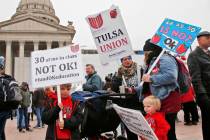Condo insurance, roof repairs complicated
Q: Should homeowners associations have fire insurance for multiunit dwellings?
Our HOA’s insurance company stipulates the association’s policy does not cover the buildings, just common area property.
I’m updating my current homeowner’s fire insurance coverage. It seems that I should be responsible for my own portion of the dwelling, but where does that leave me if occupants of the other three adjoining units are not insured, underinsured or dispute my insurance provider?
Also, is a community required to maintain common roofing? How can we properly replace our portion of a common roof if the landlord of the adjoining unit roof declines?
A: First, in a townhouse association where a common roof is shared by more than one owner, a roofing company would have to inspect it to see to what extent it must be repaired or replaced.
The community’s covenants, conditions and restrictions may state the cost must be shared by the homeowners who share the roof. But what happens if the other unit owners do not want to participate in the expense or if a unit is vacant?
Unless the association’s CC&Rs address this issue, the problem would land on the unit owner, and would require legal action against the other owners who share the common roof.
As to the shared structure repairs and replacements, in order to include these potential expenses as part of the association’s assessments, the CC&Rs would have to be amended, which is not a quick or easy change and there is no guarantee the amendment would even be approved by the membership.
All you can do is bring these issues to the board for discussion and possible action.
I want to thank Mark Coleman from Western Risk Insurance who provided the following information:
When a deed is for a residential condominium, then the HOA must insure the residential buildings. When the property is a titled single-family home, the HOA does not provide insurance for the home. When the property is a titled townhouse, the HOA can provide insurance for the buildings or can insure only common elements.
The CC&Rs will state the type of insurance that is required. The problem is they are not always clear. Review the insurance and maintenance sections of the CC&Rs. We also have insurance requirements in Nevada Revised Statutes 116.
The maintenance section serves two purposes. It spells out who is responsible for the maintenance of the unit. That is important when there is a loss and there is no insurance benefit to repair it. The party responsible for maintenance is responsible to complete the repairs and pay for them. It also may help the board in determining if it wishes to insure the residential buildings.
The problem is that many townhouse CC&Rs state in the insurance section that the owner must provide the casualty (fire) insurance, but the maintenance section states that the HOA must maintain the exterior of the building and the roofs.
If the building burns down and one of the owners does not have insurance, then an association may be forced to maintain the exterior of the building and roof. The only way to do that is for the association to hold insurance on the buildings.
However, I have reviewed many CC&Rs for multiunit communities where the association has no responsibility for any part of the building, and does not reserve funds for any future repairs or replacements. In those associations it is up to the individual owners to work out between themselves when roofs are replaced and who pays for it.
My opinion is that all multifamily buildings should be covered by a master insurance policy.
Barbara Holland, certified property manager, broker and supervisory certified association manager, is president and owner of H&L Realty and Management Co. Questions may be sent to Association Q&A, P.O. Box 7440, Las Vegas, NV 89125. Fax is 702-385-3759, email is support@hlrealty.com.









